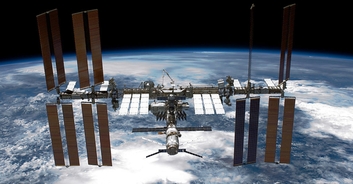If you asked people in the 1900s what they thought the 21st century would look like, they'd probably have wondrous expectations for where we'd be in 2019. They most likely would have hoped for better medical treatments, improved human rights for minorities, amazing feats of industry, and other technological advancements that they could not even have begun to comprehend.
What they almost certainly would not have foreseen, however, is cockroach milk. And yet, here we are.
According to new research, the creepy crawlies feed their babies a formula which is especially rich in protein, fat, and sugar, and the substance could be turned into a super healthy food supplement for people.

The Pacific Beetle Cockroach, which gives birth to live young, is the species of cockroach that produces the secretion, which technically isn't actually milk at all.
"Any liquid harvested from a cockroach is not true milk. At least not as we think of it," said Becky Facer, the director of school and educator programs at Fernbank Museum of Natural History in Atlanta. This is because the liquid exists in the form of protein crystals in the guts of the babies who feed off it.
"The protein crystals are milk for the cockroach infant," explained Leonard Chavas, one of the scientists behind the research. "It is important for its growth and development ... It is what one would need: protein, essential amino acids, lipids and sugars."
And if it can nourish a baby cockroach, why can't it do the same for a human being?

Unfortunately, the only way to access the milk at the moment is to extract it from the midgut of cockroach embryos, meaning it's pretty much impossible to obtain a useful amount of the liquid without going to extreme efforts.
"For now, we are trying to understand how to control this phenomena in a much easier way, to bring it to mass production," Chavas said.
Rather than "milk" the cockroaches for the secretions, Chavas and the other researchers are hoping they will be able to reverse engineer the substance and produce it artificially. Before they can do that, though, they need to figure out the way that cockroaches made the milk.
When it is ready for widespread consumption, however, it will be a superfood.

"Not only is cockroach milk very high in protein, it also contains all the essential amino acids — as well as fat and carbohydrates — you need," said Tara Allen, a nutritionist. "It is technically a complete food."
The only minor downside is that the milk is very rich in calories. To put it in context: a cup of buffalo milk contains approximately 235 calories, while the same amount of cockroach milk comes in around 700 calories. This is obviously great for communities who may need a high calorie intake from as little food as possible, but not so helpful for people who just want a protein supplement.
So, for all of the people out there who are excited about what the future could bring in terms of superfoods and healthy supplements, be prepared to eat cockroach.












